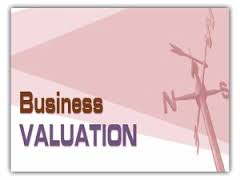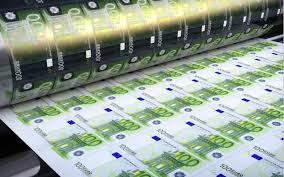The ultimate measure of a business’s cumulative success is its value.valuing a business is an art, and there are a number of different techniques, which may produce different valuations for the same business.Essentially, a business is what someone is willing to pay for it!Some of the techniques used in the valuation of a business are:
*Discounted cash flows (DCF) – Valuation= present value of estimated future cash flows
Arguably, this is the most accurate method of valuation, but it relies on access to information and the quality of the estimations used.
*Income multiples- Valuation = ‘income’ x multiple
Price/earnings (P/E) ratios are valuation multiples for publicly listed companies.The long-term average P/E multiple for listed companies is around 15.This means that valuations are on average 15 times earnings.But one should be aware of the wide variations which take place in P/E ratios, with the economy and across companies, industries and countries.Unlisted business can use a reduced P/E ratio from a similar listed company, for an appropriate valuation.The reduction should reflect the difference in selling private versus public company shares.Revenue multiples are an alternative to earning multiples and use a price/sales ratio.They are useful for businesses with fluctuating profits or even losses, as revenue should be more stable.
*Asset based valuations – Valuation = net assets value
This method is a useful minimum benchmark of a business’s value.The value of net assets in the balance sheet is often based on historic costs, which do not fully reflect the future growth potential of a business.
*Valuing a business for sale – Valuations are rarely the actual price paid by a buyer in the event of a business sale.The range of values are used by buyers and sellers of businesses simply as a starting point for negotiations.Other factors affecting value are:
>>The strategic reasons for buying or selling.
>>The number of competing buyers and sellers
>>The negotiation skills of both buyers and sellers.
>>The state of the economy.
>>If the purchase price is paid in cash or in shares.
>>The views of different owners – If they all agree to the sale.
>>If the valuation is for the whole or part of a business.
Click here for government certification in Accounting, Banking & Finance





35 Comments. Leave new
Informative.
Thanks!
valuable one…
Thanks Sunaina!
Well explained.
Thanks Ojasvi!
Good Work “D
Thanks Anirudh!
Informative!
Thanks Himanshi!
well defined article!
Thanks!
Really NYC…….especially for the businessmen…. 😉
Thanks Akansha!
Great ?
Thanks Akansha!
Gives a short and sweet introduction to all the techniques!
Thanks Dipesh!
Good job, Aman!
Thanks Shaily!
Very nice!
Thanks megha!
Well explained.
Thanks Aayushi!
Good points
Thanks Aish!
Well written!
Thanks Aradhana!
Well expressed.
You have mentioned that a business Is something what people are willing to pay for it. Isn’t it also what people are willing to pay and can pay as well? Moreover, are these preferences revealed or stated?
of course!if some one is willing to pay that means he/she can pay!
The concept s of compounding and discounting play a prominent role in estimating the value of the company , by taking out the present value and the npv , you can figure whether investment in this company is feasible, very well written great job
well written
the article is structured properly
‘income multiples ‘ and ‘valuing the business for sale ‘ are explained properly .
Good one.